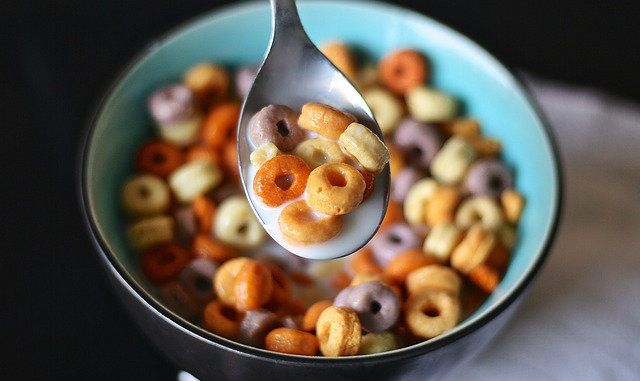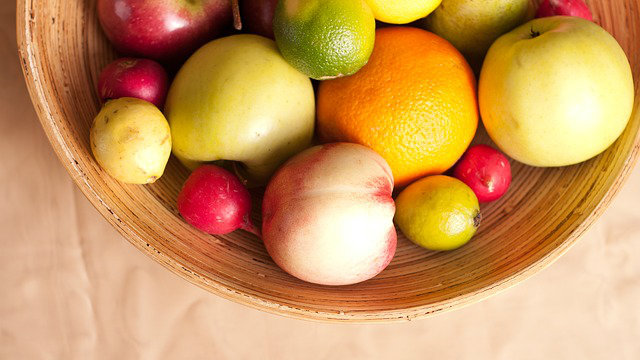
The rules for healthy eating actually are simple — and to understand them, you’ll start by identifying the foods to avoid.
Foods to avoid come in packages and bottles, and they’re found in the interior of the grocery store — among the chips, crackers, cookies, candy, cereals, sodas, and frozen foods. They also dominate the takeout menus tacked to your fridge and the menu at your local restaurant, where manmade oils (like canola and vegetable) are the primary cooking substrate, and salt and sugar are added to everything.
In the name of health, you’ll simply avoid this stuff.
Instead, you’ll keep your diet to foods found in the produce section, at the butcher, and at the fishmonger, choosing whole foods procured from good sources, free of added chemicals, sugars, or oils.

While this approach might sound easy in theory, putting it into practice can be much more difficult.
Luckily, we’ve got your back.
Below, we’ll give you the “cheat sheet,” walking you through an easy method for making better choices (including how to use the Whole Life Challenge food lists to decide what you should be eating). Even better, you’ll get a three-step method for making some changes today.
But before we get there, let’s talk about a critical idea — how to know what’s bad for you (and why).

How to Identify What’s Bad for You
There are certain foods, widespread and easily available, that are bad for your health. They tend to share three characteristics:
- They’re processed, nearly always containing multiple ingredients, many of which are additives that, listed alone, would be unrecognizable as food.
- They have inflammatory qualities upon ingestion, causing symptoms like excess mucus, joint pain, lethargy, bloating, and fat accumulation.
- They require little to no preparation on the part of the consumer, and can be eaten out of the bag, box, or freezer.
These foods come from just a few families:
- Those made with added sugars
- Those made from processed grains
- Those containing man-made industrial oils
- Non-fermented dairy products
- Alcoholic drinks
The Long-Term Problem with Chronic Bad Food Choices
Because of their widespread availability (and extremely tempting nature), foods containing inflammatory ingredients are easy to identify, yet difficult to avoid. Our celebrations, gatherings, and busy lifestyles nearly demand convenient, indulgent foodstuffs. So, we acquiesce: a treat here, a stress-numbing drink there, takeout instead of home cooking after a long day.
Perhaps more insidiously, we’re drawn in by the addictive qualities of sugar, the pleasure centers of the brain “lighting up” in response to repeated intake — so one cookie becomes two, a slice of pizza becomes half a pie, and a spoonful of ice cream becomes the whole pint.

When this type of intake becomes habit, we develop the secondary symptoms of chronic inflammatory food choice — excess body fat, lethargy, and depression. If this goes on long enough, we develop further symptoms — high blood pressure, high triglycerides, high fasting blood glucose, and high levels of systemic inflammatory markers like A1C, all of which serve as precursors to the diseases of the Western World: cancer, heart disease, and diabetes.
It therefore stands to reason that we would wish to nip inflammatory food choice in the bud by instead choosing healthful, non-inflammatory foods.
The Whole Life Challenge Food Levels Explained
This is the background from which the Whole Life Challenge starts. We’re looking to give you guidance on the successful elimination of inflammatory foods from your diet. We do so through the lens of reality, recognizing you may not be ready to make 100% of the sacrifices necessary to eat in the healthiest way possible.
Instead, we start by meeting you where you are, with nutrition requirements that are driven by personal choice and the recognition of your current lifestyle.
This takes the form of three food levels: Kickstart, Lifestyle, and Performance.
In sequence, they move from least restrictive to most restrictive, eliminating more inflammatory foods with each step along the continuum. When you play the Whole Life Challenge, you choose a level that meets your personal criteria of being challenging without seeming impossible. One that will alter your current eating habits without forcing you into drastic (and unsustainable) change.
Kickstart Level
Kickstart begins by removing the most prevalent inflammatory foods, including bread, pasta, candy, soda, and beer, hitting the high points of improving health without getting overly restrictive. It also introduces good food choices, including meat, vegetables, fruits, and fats from natural sources.
Kickstart is a good place to start if you’ve never altered your diet before or are an experienced Challenger looking for a diet you can live with every day. Kickstart is generally sufficient as a prescription to begin the reversal of poor health markers. In a recent challenge, 31% of players chose the Kickstart level.

Lifestyle Level
Lifestyle adds additional restrictions, eliminating a selection of additional dairy products, grains and starches, sweeteners, fruit juices, and artificial colors and flavors. The tradeoff for these additional restrictions comes in the form of a more rapid journey toward favorable body composition and improved health markers. In a recent challenge, 57% of players chose the Lifestyle level.
Performance Level
For those who wish to remove more inflammatory foods from their diet, Performance piggybacks on Lifestyle, eliminating nearly all dairy, starches, alcohols, sweeteners, and grains. Performance holds the most potential for rapid bodily and health change, but also presents the largest departure from the standard Western diet, and can therefore be hard to sustain in the absence of strong motivation. In a recent Challenge, 12% of players chose the Performance level.
The Results You Get from the Whole Life Challenge
While the mechanisms of inflammation and its relationship to disease can be hard to fully comprehend (and are still being researched), our own experience has delivered incontrovertible evidence in favor of the anti-inflammatory diet. The following have all been reported by Challenge participants:
- Reduced body fat
- Improved blood markers
- Improved athletic performance
- Better sleep
- Reduced perceived stress levels
- More favorable professional health evaluations
When taken in concert with the other 7 Daily Habits of the Whole Life Challenge, including exercise, hydration, and mobility work, the adoption of the anti-inflammatory diet truly has the potential to change the way you live.

The Change You Can Make Today
As a first step, you can try this immediately:
- Read through the food list for your level, and see which foods you’re currently eating that would be restricted on one (or more) levels of the Challenge.
- Choose a single food type to eliminate from your diet for seven days. As a suggestion, try added sugar, bread, or alcohol. After seven days, reintroduce that food into your diet, and see if there is a perceptible difference in how you feel.
- Continue the experiment — choose a new food type to test or dive wholeheartedly into the adoption of one of the less restrictive levels of the Challenge. Pay attention to how you feel and how your body is reacting, and be sure to give the experiment at least two weeks to run.
- If you’re ready, join the next Challenge. You’ll have the opportunity to choose an anti-inflammatory nutrition level that’s right for you, giving you hands-on practice with nutritional change — and receiving the benefits. There may be no better way to get your health on track for the long term.



































